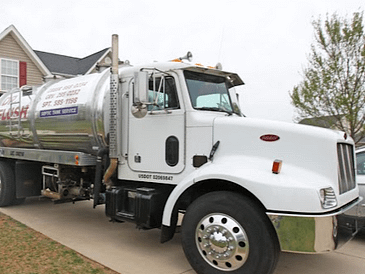Modern vs Traditional Septic Systems: What Every Homeowner Should Know
Choosing the right septic system for your property is a decision that impacts your home’s functionality, your finances, and the environment. With evolving technology offering more options than ever before, homeowners need to understand their choices beyond just traditional septic tanks.
Understanding Your Septic System Options
Traditional septic systems have served rural and suburban homeowners for generations, but modern alternatives are gaining popularity for their efficiency and environmental benefits. Before making any decisions about installation or upgrading, it’s essential to understand how these systems differ.
“The septic system is arguably the most important and expensive system in your home that you never think about—until something goes wrong,” says Jake Thomas, director of the National Onsite Wastewater Recycling Association. “Choosing the right system for your specific property conditions can prevent costly failures and protect local water quality.”
How Traditional Septic Tanks Work
Traditional septic tanks operate on a simple but effective principle. These underground tanks, typically made of concrete, fiberglass, or polyethylene, collect all wastewater from your home. Inside the tank, natural bacterial processes begin breaking down waste while the system separates it into three layers:
- A top layer of oils and grease (scum)
- A middle layer of liquid wastewater (effluent)
- A bottom layer of solid waste (sludge)
The clarified effluent flows from the tank into a drain field—a network of perforated pipes surrounded by gravel and soil. Here, the soil naturally filters the wastewater before it eventually returns to the groundwater system.
Exploring Advanced Septic Alternatives
For homeowners facing challenging soil conditions, limited space, or stringent environmental regulations, several modern alternatives offer solutions where traditional systems might fall short:
Aerobic Treatment Units (ATUs)
ATUs introduce oxygen into the treatment process, accelerating the breakdown of waste through aerobic bacteria. These systems can achieve higher treatment levels than conventional septic tanks, making them suitable for properties with poor soil conditions or those near sensitive water bodies.
Mound Systems
For properties with high groundwater tables or shallow soil depth, mound systems provide an engineered solution. These systems feature a raised drain field constructed with sand, creating adequate distance between wastewater discharge and groundwater.
Drip Distribution Systems
Ideal for properties with irregular lot shapes or landscaping concerns, drip distribution systems use a network of small, flexible tubing to distribute effluent evenly just below the ground surface. This shallow placement maximizes natural soil treatment while minimizing excavation and landscape disruption.
Sand Filter Systems
Sand filter systems pass effluent through a constructed sand bed before it enters the soil. This additional filtration step provides superior treatment, especially in areas with poor soil conditions or environmental sensitivity.
Comparing Costs and Maintenance Requirements
When evaluating septic system options, both upfront costs and long-term maintenance deserve careful consideration.
Installation Cost Differences
Traditional septic systems typically cost between $3,000 and $7,000 for installation, depending on soil conditions and system size. Modern alternatives generally come with higher price tags:
- Aerobic Treatment Units: $10,000-$20,000
- Mound Systems: $15,000-$25,000
- Drip Distribution Systems: $8,000-$18,000
- Sand Filter Systems: $7,000-$18,000
Long-term Maintenance Considerations
While traditional systems require pumping every 3-5 years (costing $300-$600 per service), modern alternatives often demand more frequent attention:
- ATUs typically need quarterly or semi-annual inspections
- Electrical components require periodic replacement
- Filter media may need occasional replacement
- Some systems require annual maintenance contracts
Environmental Impact Comparison
Modern septic alternatives often provide superior environmental protection compared to traditional systems. This difference becomes particularly important for properties near water bodies or in areas with high groundwater tables.
Nitrogen and Phosphorus Removal
Advanced systems can significantly reduce nitrogen and phosphorus levels in treated wastewater—nutrients that contribute to algal blooms and water quality degradation. Traditional systems provide minimal removal of these nutrients.
Pathogen Reduction
Modern alternatives typically achieve higher pathogen reduction rates, helping protect groundwater quality and reducing public health risks. This enhanced treatment becomes especially valuable in densely populated areas or where wells provide drinking water.
Choosing the Right System for Your Property
Several factors should guide your septic system selection:
Soil Conditions and Property Characteristics
Your property’s soil percolation rate, depth to groundwater or bedrock, available space, and slope all influence which system types will function properly on your site. A site evaluation by a qualified professional provides essential information for making this decision.
Local Regulations and Permit Requirements
Many jurisdictions have specific requirements for septic system design and installation. Some areas mandate advanced treatment in environmentally sensitive locations or when replacing failed systems.
Future Property Plans
Consider your long-term plans for the property. If you’re considering home additions, installing a pool, or other significant changes, factor these into your septic system planning to avoid costly modifications later.
When to Consider Upgrading Your Existing System
If you already have a traditional septic system, several situations might warrant considering an upgrade:
- Recurring system failures or backups
- Plans to expand your home
- Environmental concerns about nearby water bodies
- Increasing groundwater protection regulations
- Desire to reduce maintenance frequency
The Bottom Line for Homeowners
While traditional septic systems continue to serve many homeowners effectively, modern alternatives offer solutions for challenging sites and provide enhanced environmental protection. The best choice depends on your specific property conditions, budget, and local regulations.
Before making any decisions, consult with a licensed septic system designer or engineer who can evaluate your property’s unique characteristics and help you navigate the available options. This professional guidance ensures you’ll select a system that provides reliable service while protecting your investment and the environment.
Remember that whichever system you choose, proper maintenance remains the key to long-term performance and preventing costly failures. By understanding your septic system and following recommended maintenance schedules, you can enjoy trouble-free operation for decades to come.




